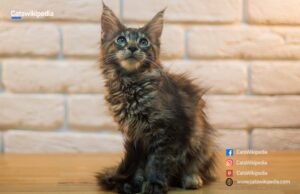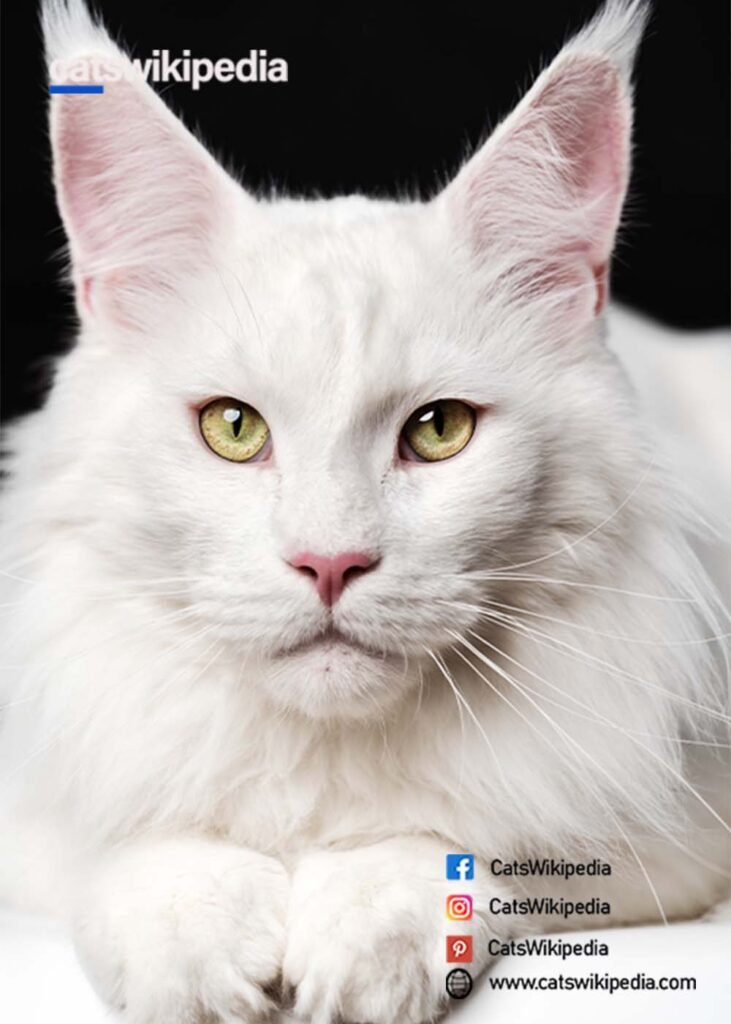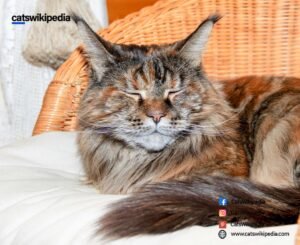MAINE COON POLYDACTYL
INTRODUCTION
Maine Coon polydactyl are an exciting breed, and many cat fanciers love them because of their gigantic size and supplementary digits. Maine Coons, large and friendly, show this unique trait, which is barely seen in most cats: polydactyly. This is a genetic abnormality that produces extra toes of the paws, making them more thrilling and different from all other breeds. The polydactyl Maine Coons have more than five toes on either the front or rear foot, with quite a number having seven or more fingers on each paw.

This is not specific to Maine Coons, but it has interested many cat fanciers. Because of their broader, more snowshoe-like paws, the Maine Coons are said to have probably benefited from this in crossing snowy areas. But that is only a guess. Most of the time, extra toes do little to interfere with a cat’s gait; they frequently enhance it. For Maine Coon owners, an atypical arrangement of paws is cute and unique, adding to the charm of these already charming and beloved feline friends.
CHECKING MAINE COON POLYDUCTYL QUALITY
Maine Coons are polydactyl in Maine. Extra-large, multi-toed paws of Maine Coons are especially typical of their Maine ancestry.
Our polydactyl Maine Coon of today are a direct visible genetic link to the lovely history of maritime family life, having descended from cats chosen by hardy nautical people. A polydactyl Maine Coon from a Kennebec River town or hamlet is live, tangible proof of its native Maine ancestry. This may be traced back to the original Maine cats, which were perhaps a type of 300 years or more when polydactyly finally got intertwined with and irreversibly incorporated into the original Maine Coon.

Polydactyl Maine Coon are the most unmistakable and apparent manifestation of the long and illustrious history of natural selection. The polydactyl A Maine Coon is a Maine Coon in every way, including having additional toes. This term means “multi-toed,” the extra-large paws are dubbed “double-paws” because they are often double-wide. They can travel across snow more readily, earning them the nickname snowshoe cat; nevertheless, they are more commonly referred to as polys.
VARIETY OF PAW FORMATION
A Thumb of Distinction for Mitten Paw
The mitten paw is a feature that may be found in polydactylism within certain breeds of cats, whereby the additional digit creates a sort of thumb on the paw. This strange shape of a paw may contain extra dew claws and appears like four toes, a small dew claw, a thumb, and another dew claw. Its genetic cause is largely attributed to the “Hw” point mutation; it is comparatively prevalent in some feline populations, including Florida Hemingway cats, Pixie Bob cats, and in some Maine Coon pedigrees.

Patty Paw with Her Rounded Configuration
Unlike the mitten paw, the patty paw does have a somewhat different structure in that there is a row of toes but an almost nonexistent thumb. This variant was researched in France in 2011 and had also replicated the function of the Hw mutation without having a precise isolation. However, it possessed a very huge paw with six fingers, quite different from the usual mitten paw. Curiously, this variety sometimes renders six-digit mitten kittens, which is what complicates genetics in polydactyly.
Unraveling a Genetic Enigma in Canada
The unidentified Canadian variety is yet another addition to the polydactylism repertory, found in 1992 in Manitoba, Canada, by a foundation cat called the Maine Coon. Just like patty paw development, this variation has introduced a differential expression similar to that of the Hw mutation; however, the six numbers are prominently seen. Its finding was a watershed in understanding genetic variety that contributed to polydactylism and enhanced our view about these unique features of felines.
Unraveling Genetic Complexity
Considering these various forms of paws and related mutations, there is a genetic tapestry that is truly complicated in giving feline polydactyl cats this interesting diversity. Understanding the mitten and patty-paw variants allows a better appreciation of feline genetics. It points to such amazing individuality that sets apart polydactyl cats within the exciting domain of feline features.

RECOGNITION OF MAINE COON
Large in appearance yet endearing in disposition, Maine Coons possess one distinguishing feature: polydactylism. This exciting trait, most definitely characterized by additional toes, further mesmerizes and mystifies these already intriguing felines. Since it is not yet clear why Maine Coons are polydactyl, the general assumption is that this is a normal genetic variation that makes them different from other breeds of cats.
The extra digits give Maine Coons added flair that perhaps allowed them to hunt and conquer a variety of different terrains, which speak of their adaptability. Apart from the practical benefits, polydactyl Maine Coons were considered by many as good luck and have always been the seafarers’ choice for generations. Lastly, the polydactyly of Maine Coons is cute and furthers their appeal and uniqueness. Be it in mythology, genetics, or medicine, this odd quality continues to astonish the cat fanciers and makes this gentle giant all the more charming in the world of felines.
LAST WORDS ON MAINE COON POLYDACTYL
The Maine Coon Polydactyl are rare and captivating breeds which have easily stolen the hearts of cat fanciers all over the world. Due to their extra toes, the Maine Coon Polydactyl cats are extremely recognizable; many such cats show enhanced dexterity, too. Much more than handsome-looking cats, they are affable and sociable companions. With this genetic tendency, the Maine Coons are polydactyl, adding another layer of appeal and intrigue to this already beautiful breed. The unique features and charming presence of Maine Coon Polydactyl cats keep them in high regard in homes. Owning a Maine Coon Polydactyl means accepting a cat with outstanding physical attributes and friendly characters.





